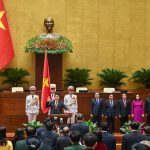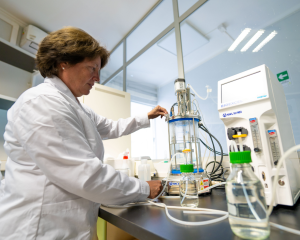They seek to take advantage of the cell wall properties of strawberries, calafate and papaya to improve people’s health conditions.
Communications UTalca.- Studying the properties of the cell wall of fruits such as strawberries, calafate and papaya, in order to take advantage of their properties for pharmacological and agro-industrial alternatives, is the objective of a research undertaken by academics from the Institute of Biological Sciences of the University of Talca.
This work is part of the Ring project called (Chicobio) “Components of the cell wall of Chilean fruit as a biotechnological resource”, led by the academic María Alejandra Moya, and in which researchers from the universities of Talca, Chile participate. and Andres Bello.
“The project intends to study these native fruits and use their residues generated by agribusiness to obtain new products that may have pharmacological or health use, such as helping the mobility of food in the digestive tract,” explained the researcher. ”.
“Likewise, this project will allow us to obtain genetic and molecular information on these fruits that have not been discovered, and that we can use for our benefit. We want to generate a great biotechnological contribution”.
Currently, the project completed its first year of execution of the three that are projected. In this period they have made important advances that were presented at the International Congress of Rosaceae Genomics, held in New Zealand from March 13 to 16. In this instance, Moya was the only Chilean participant as a speaker.
“We show the advances we have made in our research, specifically the biological components that participate in the disassembly of the cell wall and that are present at different times of fruit ripening. That is, we inform the international scientific community which new biological elements are participating from the development of the fruit to its maturation,” explained the academic.
ring project
This Ring Project has generated various development possibilities for the Institute and the University, as reported by the main researcher of the project, academic Raúl Herrera, who indicated that this initiative allows strengthening the academic training of undergraduate and postgraduate students, increasing the networks of international collaboration, developing frontier research and linking up with the environment.
“For us it is also important that this project is an opportunity for growth and generation of new knowledge for Biochemistry students, to improve their lines of work and meet foreign academics. An example of this is the work of Claudia Gómez, a student graduating from the PhD in Sciences with a mention in Plant Genetic Engineering, who received an award for the best presentation and was highlighted by a panel of international experts”.
“Likewise, as it is an associative project, we have concentrated part of our efforts on consolidating a national and international network on this subject. For this reason, last December we organized a research conference at Campus Santiago with the participation of several colleagues from European universities, to whom we informed our work with the Ring. We hope to replicate a similar journey this year”, added the academic.
On the other hand, Herrera stressed that in addition to scientific work, the project has carried out outreach activities to motivate new generations to study science.
“We carried out the fifth version of the Scientific Camp in Linares, in which for a week schoolchildren received talks, carried out laboratory activities and developed research projects.”
“Another initiative in which we have participated is the creation of a Biochemistry and Cell Biology Contest, in which we invite high school students to participate in a test that is carried out through the Liceo Virtual platform. The interest of young people has increased, since last year more than 120 students from different regions of the country participated”.











![[Img #74148]](https://thelatestnews.world/wp-content/uploads/2024/10/Street-lights-that-get-their-electricity-from-traffic-vibrations-300x200.jpg)
